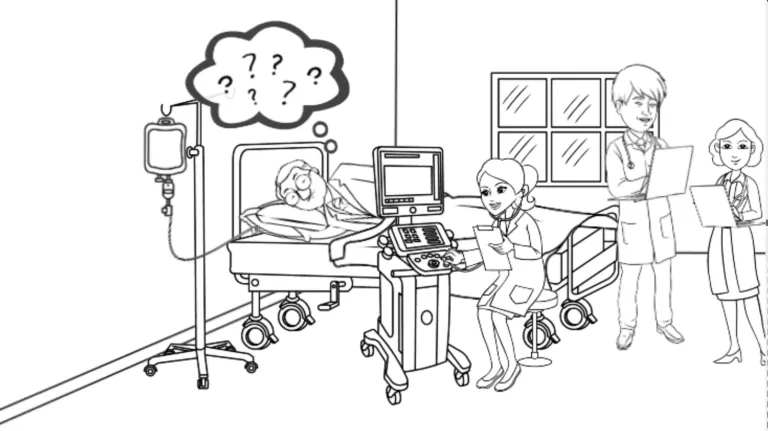- | Healthcare Healthcare
- | Expert Commentary Expert Commentary
- |
Electronic Health Records: A Good Idea, Poorly Executed
The American Recovery and Reinvestment Act (popularly known as the “stimulus”) required all healthcare providers to adopt the use of Electronic Health Records (EHRs) in their daily practice in order to sustain their Medicaid and Medicare reimbursement levels. Proponents of EHRs argue that they will contribute to higher quality and safer care by providing accurate, up-to-date information that is readily accessible.
Unfortunately, research and testimonials suggest EHRs in their current form detract from patient satisfaction and overall quality of care while at the same time burdening physicians with crippling administrative costs and symptoms of burnout.
Entering data in EHRs is a time-intensive process that acts as a conversation barrier in real-life medical practice. Primary care physicians typically serve 2,300 patients, on average seeing 20 of those patients a day. With EHR burdens, providers are faced with reduced face time with patients—averaging only about 12 to 15 minutes per patient.
Perhaps half of each limited interaction is absorbed documenting the medical visit in extensive detail as required by law, further restricting relationships between the physician and patient. Some physicians also report spending personal time updating and maintaining these records after a day filled with seeing patients.
Adopting EHR systems is cumbersome and often comes with a lofty price tag. On average, it costs about $33,000 upfront to purchase the initial EHR hardware and software, train current staff, and pay for whatever implementation assistance a practice may need. Subsequently, ongoing network fees and maintenance expenditures cost $4,000 a year, on average.
Shockingly, it requires about 134 hours, or 16 full workdays, per physician to receive adequate training to use these new systems. On average, every office-based physician in the United States requires about two administrative staffers to assist with these duties. Unfortunately, as the administrative burden grows and costs rise, financial considerations are forcing doctors to lay off clerks. These responsibilities then occupy a significant amount of physicians’ workdays.

In a study produced on clinician burnout, EHRs were the second most reported factor contributing to burnout, lagging only behind bureaucratic tasks, which, of course, are also commonly associated with EHR use.
Patients themselves also receive less benefit from these records than they ought to. Under the Health Insurance Portability and Accountability Act (HIPAA) privacy rules, physicians are required to provide patients with copies of their records upon request, but the patients generally do not own their own records. As of 2015, New Hampshire was the only state in which the medical data legally belonged to the patient. Most states either cede ownership rights to the authoring physician or leave ownership unspecified. This consequentially affects the transferability of records. As patients move from provider to provider, essential medical information can be lost.
Although EHRs have not proven to be the panacea supporters had hoped, they do encourage collaboration among the patient’s entire healthcare provider portfolio, also holding vital information to the patient and physician on a baseline technological platform. Rather than abandoning EHRs completely, we should build on the capabilities they already have.
As suggested by Mercatus scholars Robert Graboyes and Darcy Bryan, one solution is an advanced patient tracking system, incorporating data from multiple providers, which they call digital health biographies (DHB). Like traditional EHRs, DHBs would maintain treatment records for patients. But DHBs would differ in their ownership, structure, and primary goals.
Ideally, a DHB would be a more portable and patient-centered than today’s EHRs. Currently, a patient’s medical records are scattered among a web of providers, making the records difficult to transport and aggregate. This increases the chances of miscommunication.
Unfortunately, the Food and Drug Administration (FDA) is currently standing in the way of innovation in the medical records sphere. A Forbes article by then-future FDA commissioner Scott Gottlieb explained the regulatory problems that EHR companies face. They do not want to fall under the FDA’s cumbersome medical device approval process. To avoid doing so, they limit the capabilities of their technologies to do nothing more than to collect, store and report healthcare data. Any further capabilities classifies the innovation as a new medical device, initiating the lengthy FDA approval process.

These barriers that prevent innovation in medical health records should be reconsidered. If more experimentation is allowed, DHBs could be owned by the patients themselves in a single comprehensive document incorporating data from all of their providers. Storing this data in a single location and having it readily available would allow physicians to analyze relevant aspects of a patient’s health. DHBs could even evolve to the point of recommending treatments, through algorithms based on millions of stored data points and trends.
EHRs are at present a costly and time-intensive system that offers few of the benefits advocates claim in their current state. Physicians and patients are paying the price for the shortcomings of bad policy and barriers to innovation in the market. A next-generation system, designed to focus on clinical (rather than financial) concerns could better serve both patients and providers.
Photo by John Moore/Getty Images